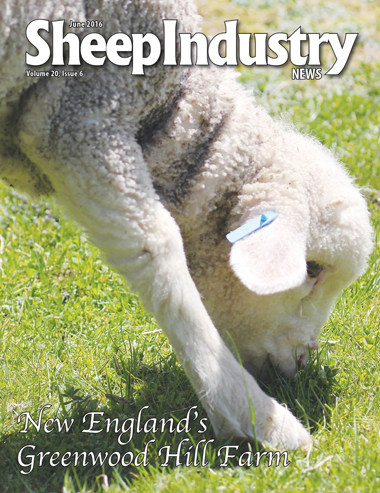To View the June 2016 Digital Issue — Click Here

ASI Volunteers Are Making A Difference
Burton Pfliger, ASI President
I hope your spring season has been productive and the weather cooperative on your operation. It’s a busy time of year for farmers and ranchers and it seems to be just as busy on the association front anymore.
I complement the ASI Lamb Council for completing the association’s comments to the USDA Agricultural Marketing Service on updates to the Mandatory Price Reporting system for lamb. The council spent four years making this happen with the commission of a thorough review by the Livestock Marketing Information Center to determine how accurate the system is and what updates should be included to improve the transparency of the market place.
We need to compliment Dr. Craig Morris and his Market News Division officials for their cooperation and management of the changes to the lamb system. Morris authorized updates we identified in the report that could be made under existing authority and is implementing several more that we included in the congressional reauthorization of MPR in September 2015. Importantly, Congress changed the reporting requirements so we will have at least one more lamb packer participating and two additional importers.
Additionally, AMS requested comments this spring on suggestions to update a report on lambs committed and a new manner to report pelt credits paid to producers and feeders. Both changes were detailed in the 2012 LMIC report and discussed extensively with producers, packers and feeders at each national convention since that date, as well as conference calls of the Lamb Council and a price reporting taskforce. Less than a dozen comments were filed nationally on the proposals and USDA plans to respond by either dropping the proposals or implementing them by early June.
Neither of the major lamb packing companies supported the changes citing concerns with importers reviewing the lambs-committed reports and determining when to ship more frozen lamb meat to America. With the nation’s meat coolers bursting with the highest level of lamb since the 1970s, I tend to doubt importers pay any attention to timing or volume of lamb shipments other than to make sure their meat is here for Christmas and again for Easter/Passover. The strong U.S. dollar and weaker sales of lamb into Asia has New Zealand and Australian firms clearly focusing on sales to America despite price or demand.
The larger price reporting issue is the lack of formula lamb-sales prices since early February. USDA cites confidentiality provisions that not enough lamb companies are trading each week to publicly release these reports. This hinders an accurate view of market-lamb prices and prohibits sales of LRP-Lamb Insurance. I and staff have visited by phone or in person with USDA essentially every week for the last three months to help resolve this situation and resume full price reporting. The Mountain States Lamb Cooperative purchase of JBS lamb obviously took out one of the major lamb reporters and makes the confidentiality rules more problematic for the lamb business. We understand a solution is underway and continue to encourage the department to make it timely.
Sufficient data was available to offer LRP-Lamb Insurance for the first time in three months in early May. However, as of this writing, we aren’t sure whether the problem is solved or if the reports offered on May 13 were just an anomaly.
On another front, I want to commend the ASI Production, Education and Research Council for efforts in May to provide formal comments to continue the operation of the U.S. Sheep Experiment Station. USDA asked for comments to be filed by mid-June on four options to operate the station to meet the federal National Environmental Policy Act. The analysis conducted by USDA itself says it can operate fully without negative impact on grizzly bears, wild sheep or sage grouse.
USDA told us in March they are “neutral” on the station, so supportive comments are important. Also, the council was active with day-long webinars and conference calls with the department on sheep research planning. We are fortunate to have sheep producers, veterinarians and academia volunteering their time and expertise.
On the Veterinary Feed Directive front, ASI submitted two applications to USDA in May to fund trials to update labels for use in sheep – chorotretaclycne (CTC) in feed and meloxicam pain reliever. The Zoetis company will provide support for the CTC application. It is critical to have a manufacturer on board and our legislative firm in Washington, D.C., will push for funding to match the nearly $70,000 that ASI has committed to the CTC label approval trials.
A note must be made this month, as well, for the recent meeting of the Let’s Grow Committee. Again, volunteer sheep producers and wool and lamb company representatives thoroughly vetted applications from across the United States to make our industry more efficient and profitable. The committee spent two days in sorting the priority projects that fit the goals of the ASI-funded program through change campaign.
Now, the program coordinator, and essentially the entire office staff from accounting to communications to administration, assists in the contract approval, check writing, record keeping and publicity with the grant recipients.


